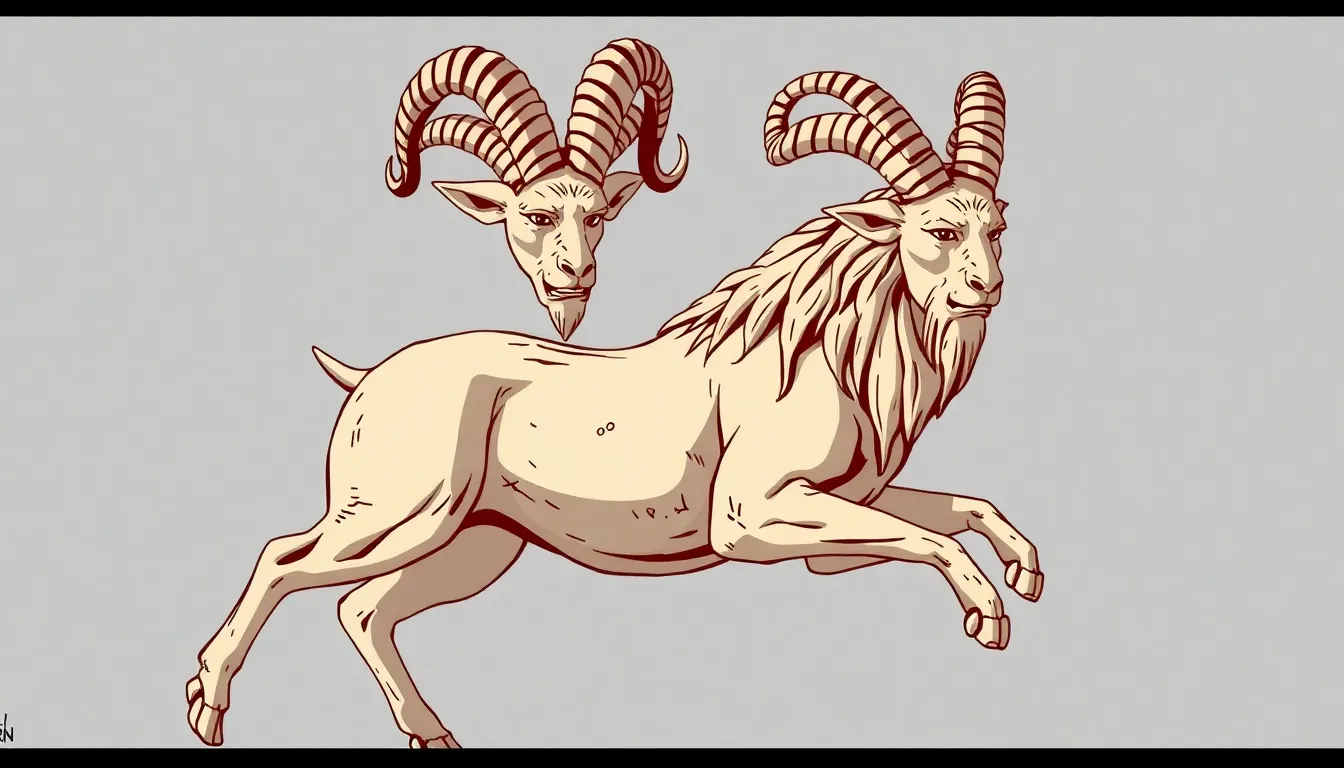Famous Satyrs in Greek Mythology: Stories and Legends
I. Introduction to Satyrs
Satyrs are fascinating creatures from Greek mythology, often depicted as half-man and half-goat. They are characterized by their pointed ears, goat-like legs, and a penchant for revelry and mischief. Satyrs are closely associated with the god Dionysus, the deity of wine, fertility, and ecstasy, embodying the wild and untamed aspects of nature.
In the myths, satyrs are known for their love of music, dance, and indulgence in wine. They are often seen in the company of nymphs and other woodland creatures, celebrating the joys of life in the lush forests of ancient Greece. Their playful and hedonistic nature makes them a symbol of the primal instincts that reside within humanity.
II. The Origins of Satyrs
A. Historical Context and Evolution
The origins of satyrs can be traced back to ancient Greek folklore and rural traditions. Over time, they evolved into distinct mythological figures that reflected the culture’s views on nature, fertility, and the divine. Initially, they may have represented the spirits of the wild, embodying the untamed forces of nature that were revered and feared by ancient peoples.
B. Connection to Nature and Dionysian Worship
Satyrs are often regarded as the companions of Dionysus, participating in his rituals and festivities. They symbolize the connection between humanity and nature, embodying the chaotic and liberating spirit of the natural world. In the context of Dionysian worship, satyrs played an essential role in the celebrations of life, death, and rebirth, reinforcing the importance of balance between civilization and the wild.
III. Pan: The Most Renowned Satyr
A. Mythological Significance
Among the satyrs, Pan holds a special place as the most renowned. He is often depicted as a bearded man with the legs and horns of a goat, embodying the spirit of the wilderness. Pan is not only a satyr but also a god of the fields and shepherds, representing the untamed aspects of nature.
B. Pan’s Adventures and Encounters
Pan is known for his playful and mischievous demeanor, often pursuing nymphs and engaging in various escapades. One of his famous myths involves his pursuit of the nymph Syrinx, who transformed into reeds to escape him. In his sorrow, Pan created the pan flute from the reeds, symbolizing his connection to music and nature.
- Pan’s ability to instill panic in mortals gave rise to the term “panic,” reflecting his chaotic nature.
- He was also known to play music that could charm both humans and animals, highlighting his dual nature as a protector and a trickster.
IV. Silenus: The Wise Satyr
A. Relationship with Dionysus
Silenus, often depicted as a drunken old satyr, is another prominent figure in satyr mythology. He is known as the tutor and companion of Dionysus, sharing in the revelries of the god. Despite his inebriated state, Silenus possesses great wisdom and knowledge of the world.
B. Tales of Silenus and His Wisdom
One famous tale involves Silenus being captured by King Midas, who, impressed by his wisdom, treated him with great hospitality. Silenus, in return, revealed that true happiness lies in simplicity, highlighting the contrast between wealth and contentment.
- Silenus is often portrayed in art as a jovial figure, embodying the spirit of celebration and revelry.
- His relationship with Dionysus emphasizes the bond between wisdom and folly, showcasing the complexities of satyr mythology.
V. Marsyas: The Satyr of Music
A. The Myth of Marsyas and the Flute
Marsyas is a notable satyr known for his exceptional musical talents. He discovered a flute that had been discarded by Athena and became a master musician, challenging the goddess to a contest. In this myth, Marsyas’s hubris leads him to believe he can outplay Apollo, the god of music.
B. Consequences of His Hubris
In the end, Apollo won the contest, and as punishment for Marsyas’s arrogance, he flayed him alive. This tragic tale serves as a cautionary reminder of the dangers of pride and the consequences of challenging the gods.
- Marsyas’s story emphasizes the theme of artistic competition and the fine line between talent and hubris.
- His myth also reflects the transformative power of music, showcasing the duality of creation and destruction.
VI. Other Notable Satyrs
A. Agreus and the Hunters
Agreus is another lesser-known satyr, associated with hunting and the wilderness. He is often depicted as a protector of nature and wildlife, embodying the balance between human activity and the natural world.
B. The Role of Satyrs in Various Myths
Satyrs appear in numerous myths, often as companions to gods and heroes. They participate in various adventures, adding a sense of humor and chaos to the stories. Their antics provide comic relief and highlight the importance of enjoying life.
VII. Satyrs in Art and Literature
A. Representation in Ancient Greek Art
Satyrs have been depicted in various forms of ancient Greek art, including pottery, sculptures, and frescoes. Artists often portrayed them in lively scenes of revelry, emphasizing their connection to Dionysus and the natural world.
B. Influence on Later Literature and Popular Culture
The legacy of satyrs continues in modern literature and popular culture. They have inspired countless works, from classical literature to contemporary films and novels, symbolizing the enduring allure of the wild and the primal instincts within humanity.
VIII. Conclusion
A. Lasting Impact of Satyrs in Mythology
Satyrs have left an indelible mark on Greek mythology, representing the duality of human nature—the balance between civilization and the wild. Their stories reflect both the joys and dangers of indulgence, cautioning against hubris while celebrating the beauty of life.
B. Reflection on Their Symbolism in Modern Times
In modern times, satyrs symbolize the exploration of our untamed selves, inviting us to embrace our instincts while remaining aware of the consequences. Their legacy endures as a reminder of the importance of balance in our lives, celebrating both reason and the wild spirit that resides within us all.




